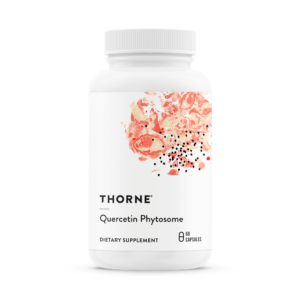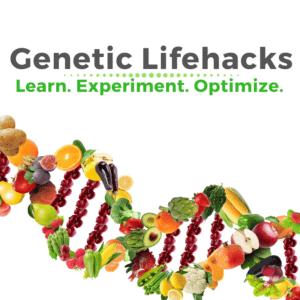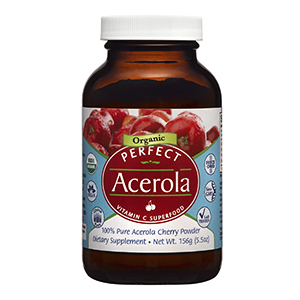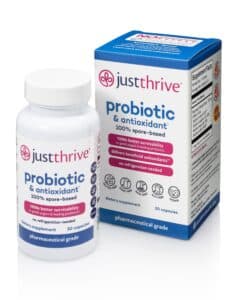nWe often blame our sniffling, sneezing, and watery eyes on those spring flowers, budding trees, and of course, grasses. But for some of us, we have these allergic reactions year-round – can’t blame that on spring flowers and the budding trees.
Maybe it is not an allergy to something in our environment but to something that we have eaten. That skin rash or sneezing after we ate something could be a food allergy. Or, it could a food intolerance.
So, if you are not getting a response from taking medications like an antihistamine, your symptoms might from a food allergy or food intolerance.
But is there a difference between food allergies and food intolerances?
What is a Food Allergy?
Most food allergies are followed with an immediate response and involve skin rashes, swollen lips, and/or tongue and in some cases stuffy nose. They are also not “dose-dependent”; in other words, you only need to eat a bite to get a reaction.
You will have a higher chance of having a food allergy if you have environmental allergies as there is cross-reaction with environmental allergens and certain foods.
So, if you are allergic to ragweed, there is a high probability that you will be allergic to cucumbers. Get my guide to see if your environmental allergies might be related to food allergies.
How can you tell if you have a food allergy? Well, the immediate reaction is the first clue. Eat a bite of an apple, get swollen lips, there is a good chance you are allergic to apples.
You can be tested for food allergies using a skin prick test but it is very inaccurate. Blood or serum tests for food allergies are also highly inaccurate.
If you are going to test for food allergies, make sure that the test is testing for what is referred to as the IgE response, not IgG response. How do you know? Check with the lab or the practitioner that you are working with.
Most of the inexpensive and common lab testing for food sensitivities only test for IgG response which is very inaccurate. Testing for food sensitivities is completely different than testing for food allergies. Testing for food sensitivities tests for reactions to the sugars in food while testing for food allergies tests for the proteins in food.
Are Food Sensitivities the Same as Food Allergies?
In a nutshell, no. First, food sensitivities are dosage-dependent and secondly, the reaction is delayed. So that omelet with 3 eggs may take until the evening to get a response.
Food sensitivity reactions are usually constipation, diarrhea, headaches, joint pain, and brain fog versus the runny nose or sniffles.
The most accurate food sensitivity testing is MRT from Oxford Labs. Why? Because they test multiple immune responses to 170 foods and chemicals. The MRT test is one of the few lab tests that tests for chemicals; some of these chemicals relate to food intolerances like tyramine (think red wine).
Tyramine is a also a close “cousin” to histamine; if you are sensitive to tyramine most likely you are also histamine intolerant. By the way, both share the genes that help to degrade them.
But What About Food Intolerances?
The most common food intolerance that causes allergic reaction in some people is histamine intolerance.
Most food intolerances are caused by lack of an enzyme or poor gut health (poor microbiome) which supports the breakdown of common food chemicals like histamine and say lactose from dairy products.
Histamine is found the highest in fermented foods, preserved meats, cheese, canned fish and alcoholic beverages. For some people they will react with sneezing and sniffling after they consume enough histamine rich foods.
Others will react with headaches, migraines, GERD or heartburn, and low blood pressure (some will have high blood pressure depending on their genes).
Almost all food intolerances are related to genomics – nutrigenomics including histamine, lactose, and tryamine. Certain gene variants will reduce the enzyme function that breakdown food chemicals like histamine, lactose, sulfur, and tyramine. Other genes will promote histamine production making it harder to balance histamine.
Food intolerance testing – it is very difficult to test for food intolerances and usually a trial and error. A nutrigenomics test is a great first step as this takes a great deal of work out of the process.
Because histamine intolerance originates in the gut and the predominant enzymes that degrades histamine in mostly produced in our gut, testing for intestinal permeability and the DAO enzyme is currently the most accurate way to test for histamine intolerance. The best test for this the Advanced Intestinal Barrier Assessment Test by Precision Point.
Advanced Intestinal Barrier Assessment Package
Ever Notice that We Get Allergies as We Get Older?
Maybe it is really is histamine intolerance? Ever notice those “allergies” get worse as we get older? There might be a connection here.
As we get older, our digestion can become impaired. For one, we produce less gastric acid as we get older which means we don’t absorb nutrients from our or breakdown food very well.
It doesn’t help that we also start taking digestive aids like proton pump inhibitors like Prilosec or H2 blockers (Zantac); both of which lower stomach acid reducing the breakdown of foods.
This also leads to partially broken-down food in our digestive system which can feed opportunistic bacteria like yeast in our gut.
Managing histamine levels depends on a healthy gut, balanced microbiota, and nutrients like vitamin B6. It has been shown that some bacteria actually produce histamine and if you have an overgrowth this will make your more histamine intolerant.
Nutrients like vitamin B6 helps us to produce the enzymes known as diamine oxidase (DAO). DAO helps to block the absorption of too much histamine and with a reduced function of DAO, it can lead to intolerance.
Managing histamine intolerance can be a challenge but you can reduce your symptoms with natural antihistamine or use dietary supplements that contain quercetin like Thorne's Quercetin Phytosome.

Nutrigenomics & Histamine Intolerance
For me, my discovery of my histamine intolerance was just using a food journal and trying to connect the dots to my migraines.
After a while, I realized that the combination of red wine, pizza was sure to trigger for migraine the next day. All foods are high in histamine even the tomato sauce.
After getting my first genomic test it became crystal clear why had such a tendency towards histamine intolerance. I had many variants in the pathway that helps to breakdown histamine or block absorption of histamine from food.
Histamine intolerance is related to gene variants in, MTHFR, vitamin B6, HNMT, COMT, and DAO. And, if you have a reduced function in methylation, this also can impact your metabolism of histamine
Eileen Schutte, MS, CN, FMN – One of my biggest passions is to help clients overcome food intolerances like histamine intolerance and sensitivities so that they can enjoy food again. My other passion is nutrigenomics, speaking to your genes through nutrition with focus on digestive health, autoimmune conditions, and skin health. I hold a master's degree in functional nutrition from the University of Bridgeport, Connecticut graduating Summa Cum Laude. After completing my masters I went on to get my certification in Functional Medicine Nutrition, and am a Certified LEAP Therapist (food sensitivities program). In addition, I am pursuing advanced education in Nutrigenomics through the American College of Nutrition.
















